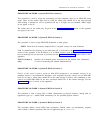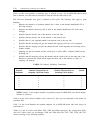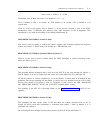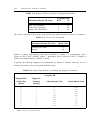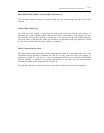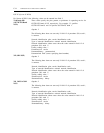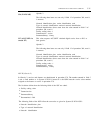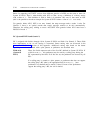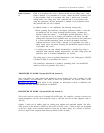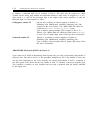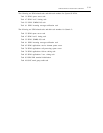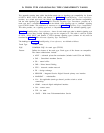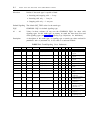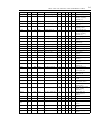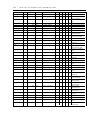
ADMINISTRATIVE PROCEDURE SUMMARY
C-17
Field 6 (Generic
2)
Field 16 of procedure 014, word 1, defines the BC for the calling party’s COS.
Fields 4 through 13 of procedure 014, word 1, define the bearer capability COS
of the preference. Field 6 of procedure 309, word 5, defines how to handle
calling parties. If a calling party with a particular BC is to be blocked from
using this preference, the next preference is checked. If all preferences block
this particular BC, the call is denied.
In addition, Generic 2 also implements the following routing rules:
●
●
When searching the preferences, the highest preference number is used that
can handle the call via circuit switching instead of using a modem pool
member (where the number 1 is the highest possible preference). This is
done to conserve the use of modem pool members. (Of course, all other
routing rules discussed in this appendix must also be met for this preference.)
If a circuit switched preference cannot be found, the highest non-circuit
switched preference is used. Fields 4 through 13 of procedure 014, word 1,
define circuit versus non-circuit switching for the BCCOS entered in field 6
of procedure 309, word 5.
A calling party with clear channel characteristics is blocked from using a
preference with restricted channel characteristics. All other calling party and
preference clear or restricted combinations are allowed.
The calling party’s clear or restricted characteristic of the calling party’s BCCOS
is defined in field 15 of procedure 014, word 1.
The preference’s characteristic is found by examining field 3 for the BCCOS
entered in field 6 of procedure 309, word 5.
PROCEDURE 321 WORD 5 (System 85 R2V4 & Generic 2)
This word defines for AAR patterns and preferences what procedure 309, word 5, defines for ARS
plans, patterns, and preferences. The fields in these two procedures are similar. Refer to the
Procedure 309 Word 5 section earlier in this appendix for information on how to administer this
procedure (all rules and field definitions are identical).
PROCEDURE 354 WORD 3 (System 85 R2V4 & Generic 2)
This word is used to assign up to 99 unique NPA-NXX pairs. For example, a location can have two
distinct designators: one for voice extensions (such as 303-538) and one for data endpoints (such as
303-255).
Generic 2 sends out 10 address digits for calling party number and connected number. The NPA-
NXX portion of the number is defined in this word via fields 2 and 3. These 6 digits are prepended
to the last 4 digits of the extension number to create the 10 address digits. (If a console is involved,
the last 4 digits of the assigned listed directory number (LDN) are used.)



